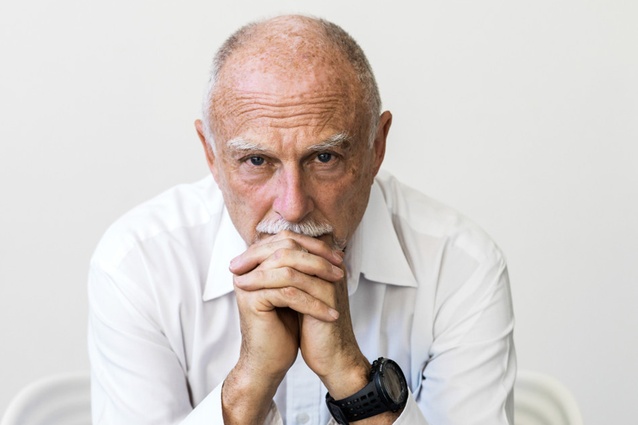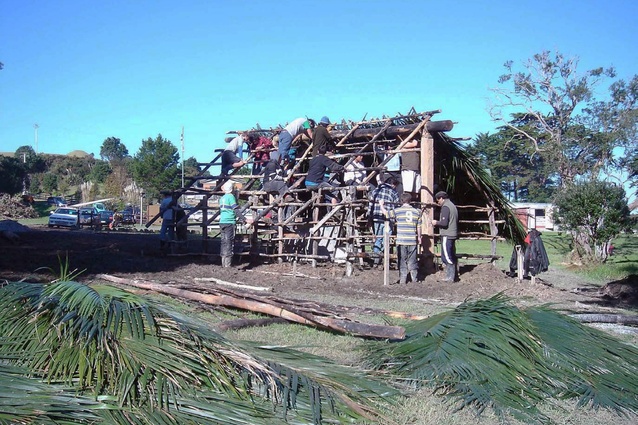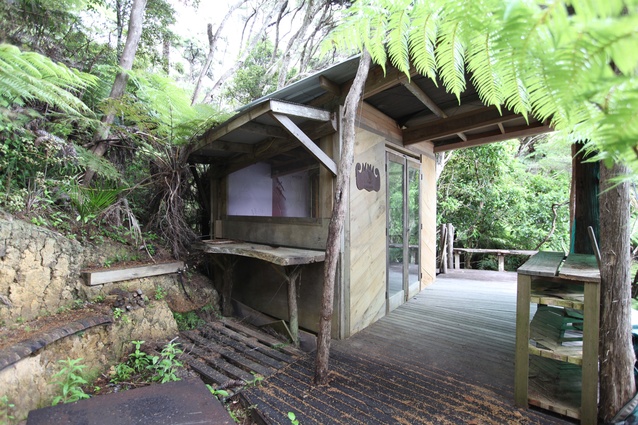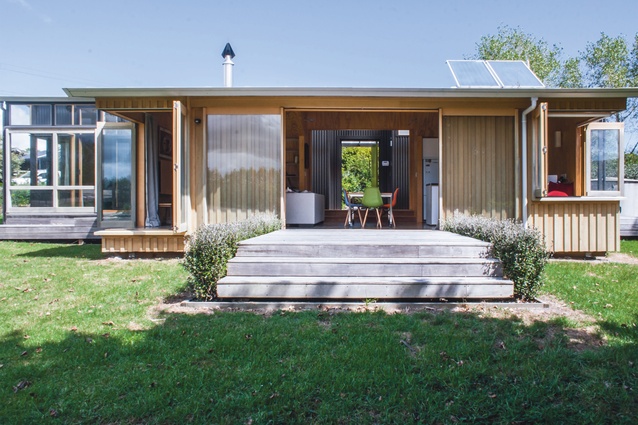In with the new: interview with Tony van Raat
New Zealand’s newest architecture school is expected to open at the end of 2016. Tony van Raat is working on designing the new school at AUT University in Auckland and comes with 23 years experience working at Unitec. Justine Harvey spoke with van Raat about this big change, and what future students and the architectural profession can expect from the new course.
Justine Harvey: You’ve worked at Unitec for 23 years, why the change to AUT now?
Tony van Raat: Unitec’s architecture programme started in 1994, I started in 1993 and, since 2000, I’ve been the head of the architecture department. There’s a new round of restructuring which takes effect shortly and the head of department’s role has been disestablished, with a new multidisciplinary network structure being introduced and a Head of Practice and Pathway, who will be looking after the suite of programmes within each discipline’s sub-area.
JH: So is it now more of a managerial role as opposed to an architectural role?
TvR: Yes, with less authority. At the age of 18, I decided I wanted to be an architect. I practiced for 19 years and since then I’ve been working in or running an architecture school and architecture is really all I’m interested in. I do accept that architecture is a completely networked profession but it’s at the heart or nexus of other discipline areas. And I’m not a bureaucrat.
JH: How did it come about that you are starting a department of architecture at AUT?
TvR: Well, AUT is the only university of technology in the country and it has a name for having an assertive and confident management structure. [The Vice-Chancellor] Derek McCormack has a good reputation in terms of wanting to do things slightly outside the frame. They’ve wanted an architecture programme for some time but there are already three architecture programmes in New Zealand and, of course, there’s no argument at all for a fourth, unless it’s radically different from the others. I have been in architecture education long enough to believe that the spectrum of architectural education in New Zealand is not well covered. Most of the architecture programmes offer only one part of that spectrum and an assertive university of technology is extremely well placed to run an architecture programme that is fundamentally different from existing ones.
AUT already has spatial design and architectural engineering programmes, and they have the Colab run by architect Charles Walker. I think an architecture programme with AUT will give focus, direction and a powerful reference point to all of these other programmes. There will be a lot of collaboration between them. We’ll try to start with a Master’s programme and an undergraduate programme will follow.
JH: How and when is that going to start?
TvR: The very earliest we could get approvals is mid this year but it’s more likely to be the beginning of 2017. The first thing to be done in my job is to write the programme and to take it through the approvals process, but that’s tied into a whole series of bureaucratic timeframes.
The word is out now though and a lot of people are interested to see what happens so it won’t be difficult to advertise. We’ve also have to staff up and it’s difficult to staff up for a programme before you’ve actually got one, which means the university has to commit money to staffing before they have an income from students. I have to write a programme with a team of people who I am in the process of assembling and then the bureaucratic wheels just have to drive it. The architectural side of this process is probably only ten per cent, the rest is resourcing and letters of support from the profession and so on.
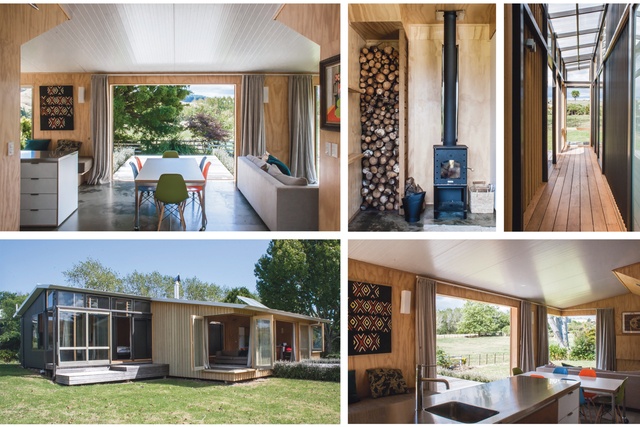
JH: When you talk about making it radically different from the others, what are you proposing?
TvR: What I observe is that the leading architectural practices in the world drive their designs through their control of technology and the ways they practice. I think there’s a need to co-opt leading technologies into the design process more but many of the technologies - such as construction and structural design, environmental design, etc - are all digitally driven now and, of course, the design process itself is heavily computerised. But, at the same time, I really want students to connect with that traditional source of creative power, which is the hand/eye/brain connection of actually laying your hands on things and making them.
So the programme will be very heavy on fabrication and very heavy on community. There will be a lot of real build projects and there will be no lectures - everything will happen in the studio. To that extent, it will be completely different. The other good thing with a new school is you can start by recruiting a group of people who all believe in that as a way of making a good architectural education.
They’ll be all new people who are all committed to this idea and I think it will move really fast. It’s not a Jesuit seminary where you all have to believe the same stuff but, at least, you need to recruit people who have the belief that we can be different. We need a different kind of architecture and architectural education in New Zealand.
JH: Looking at New Zealand’s architectural education compared to overseas, what would you say would be the main difference?
TvR: We don’t deal with the pragmatic end of architectural practice enough, we’re very heavily theorised here. If you go to Europe, there are a lot of schools which are fundamentally architectural engineering schools and they’re dealing with the technology of building, not the theory of building.
Most of the people who teach in New Zealand’s architecture schools are not registered architects, which means they’re not architects by law. They’re people who’ve had an architect education but most of them have never actually practiced architecture. Do you want the guy who maintains the engines of the aircraft you fly in or the person who replaces your heart valve to have been taught by someone who’s never put a hand on a spanner or scalpel, who only has the theory? Of course, you don’t.
JH: So isn’t it the balance between theory, technology and pragmatics that is important?
TvR: Of course, you have to have theory, because theory directs your inquiry, but architecture is a service profession which is grounded in the hard realities of technology. There’s no alternative truth about what is architecture. If you want to study philosophy, you go to the philosophy department, don’t go to architecture school. However, I’m not saying that philosophy has nothing to offer to architecture. That’s why I think architectural education and New Zealand would benefit from a new stream of architectural education to set against the others. Something new that needs to be added to the menu because I don’t really think it’s there at the moment and I believe that a lot of practitioners would agree with me. I guess I’ll find out if that’s true or not.
JH: Unless you’re keeping up to date with modern technology, how can you ever keep pace and be ever evolving?
TvR: Yes, you have to see what the leading practices in the world are doing, what computer programmes they’re using, what technologies they’re developing and how they’re using those things to make different kinds of buildings that perform better. It’s about performance. Buildings have to perform in a whole lot of ways, including experientially. The fact that we’re making a lot of buildings in this countries which make kids sick is disgraceful. If the medical profession did that, they’d be struck off and they’d probably be sued as well. In architecture, people don’t care enough because many people don’t really expect architects to make buildings that perform technically. Look at the leaky schools crisis, virtually all those schools were designed by architects and that’s going to cost the country billions of dollars to fix.
JH: I worked with education architects in the UK and we’re still not as up-to-date as them. The really good ones went into schools and worked with the students who would become involved in the whole process, and it would be a real investment in the community. That doesn’t seem to happen here - well, rarely.
TvR: Yes and if that’s going to change, it has to start changing in the schools of architecture, which has to reinforce the idea that architecture is a service profession of high value and, also, of high cost to the community. It’s a service profession, just like medicine. So those are the issues that I’m interested in and want to address. I’ve spoken to most of the leading architects in Auckland and lots of people have offered support. It will be a small school for the first five years. But small is good, you can move more quickly when you’re small. If our numbers are 100 or 150 for the first few years, that’s fine.
JH: How do you envisage international projects working within the programme?
TvR: Up to 25 per cent of projects will be offshore and 25 per cent will be community based. I’ve got plenty of international partners in the United States, South Asia and Europe, and we’ll bring people out here for periods to run projects set in their home lands and, where we can, we’ll run trips to those places. I have two projects in the Colombo Architecture Biennale in December 2016 so I can take students to Sri Lanka with me. And I’m planning a trip to Naples as well, associated with the Biennale. Basically you bring in people from somewhere else, you do a project and then you take the students over there to see where it would be, either at the beginning or the end of the project. Two projects I have next year are both build projects in the slums of Colombo. I have one build project with a Finnish theoretician who’s going to design something for us and we’re going to build it. So we have plenty of international projects coming up.
JH: And what about local community projects?
TvR: I have quite a history of those, both with the work that Dave Strachan has done at Unitec through Studio 19 and, also, through the Unitec Maori studio projects, so I’ve made a number of connections through those people, specifically the Maori community and through community housing groups. There are no shortage of community projects in Auckland. I have a project next year with the Salvation Army as a starter.
JH: What do you think are the benefits of these community projects for the students?
TvR: It reminds them of the reality of their clients - that real people occupy their buildings. With community work, you’re working with real clients who are often not the kind of people who would commission architects because they have no money, but they have real human needs. It delivers high personal satisfaction and it makes a huge difference to the people you’re working for.
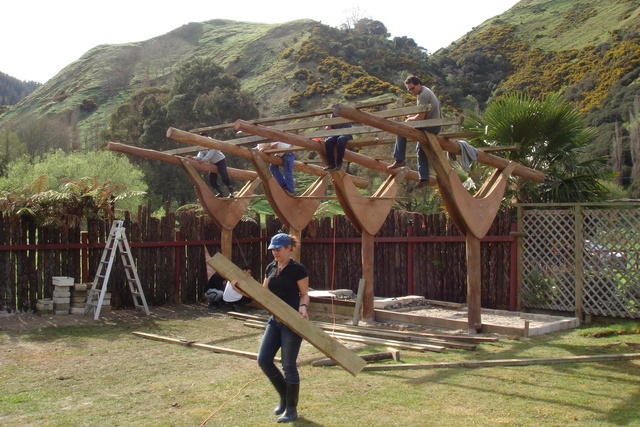
That’s what professionals are supposed to do, put their skills at the services of others. Médecins Sans Frontières is a fantastic example and, with architecture, you can do similar things. At university, your students are a free resource to give to the community and, since the community funds the universities, I believe the universities should give back. We should be thinking, in AUT’s case for instance, ‘Where in Auckland can we make a difference? Where can we add value?’ Give me a week and I’d find you 30 community projects in Auckland without the least effort because they’re everywhere.
JH: The hard part is running the project, obtaining funding and support, isn’t it?
TvR: You have to find people who have the energy for it. The fact is that a lot of the Unitec students I’ve worked with are now out working in the profession, and they’ve done those community projects, mainly working with Dave Strachan or with Rau Hoskins and Carin Wilson. They’re now in a position where they have the skills that could recreate a new generation - the kind of projects that they themselves benefitted from.
We took a group of seven to Haiti a couple of years ago to do disaster relief. One of the guys is now working for La well-known local firm and he came back from the project and said, “I thought going to Haiti would change my views about architecture but, no, it changed my views about life.” It was transformational. I took a group of students to Colombo earlier this year to do an urban agriculture build in the slums of Colombo, and we’ve got students in Vanuatu right now. The same thing - it’s transformational.
JH: If you’re going to be building community buildings, you really have to know what’s going on in the community.
TvR: Of course you do, you have to see how those people live; be inside their houses talking to the person who’s in the kitchen working. There are more of those people than there are rich clients; therefore, you can make more of a difference. We’re producing a book on Gerald Melling at the moment; he built disaster relief housing in Sri Lanka after the tsunami. There is plenty of that kind of work out there. You go into these projects intending to do good for them and, in fact, you do more good for yourself because it changes the way you see the world.
JH: If anybody wants to talk to you about the upcoming AUT architecture programme, how do they get in touch?
TvR: My AUT email is tonyvanraat@me.com. I’ll go and talk about the programme to anybody who asks me. I’ll travel as long as I can get more than four people in a room.

